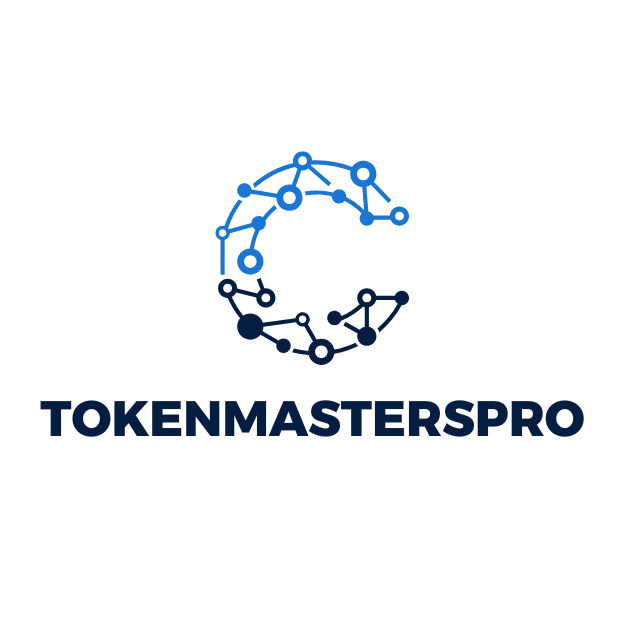In today’s tech-driven world, choosing the right programming language can make all the difference. With countless languages available, each offering unique features and capabilities, developers often find themselves at a crossroads. Whether building web applications, mobile apps, or data-driven solutions, the right language can streamline the process and enhance productivity.
This article explores the best programming languages that stand out in 2023. From established favorites like Python and JavaScript to rising stars like Rust and Go, each language serves specific needs and industries. Understanding these options not only helps developers make informed decisions but also positions them for success in an ever-evolving landscape.
Table of Contents
ToggleOverview of Programming Languages
Programming languages serve as the foundation for software development, allowing humans to communicate with computers effectively. Each language possesses unique features, applications, and communities, catering to different programming needs.
Types of Programming Languages
- High-level languages: These languages, like Python and Java, prioritize readability and ease of use. They abstract complex machine code, making it simpler for developers to write and maintain programs.
- Low-level languages: Languages such as C and Assembly provide more control over hardware. They facilitate performance optimization but require a deeper understanding of computer architecture.
- Scripting languages: JavaScript and Ruby fall into this category, enabling quick development of applications and automating tasks. They generally prioritize speed and flexibility.
- Functional languages: Haskell and Scala are examples of languages that focus on mathematical functions and immutability. They promote a different programming paradigm, favoring concise code expression and side-effect avoidance.
- Systems programming languages: C and Rust enable operating system and hardware-level interactions, offering efficiency and performance. They are essential for low-level programming tasks.
Popularity of Programming Languages
The popularity of programming languages shifts based on industry demand, technological advancements, and community support. According to the TIOBE Index, the top programming languages in 2023 include:
| Rank | Language | Popularity (%) | Key Uses |
|---|---|---|---|
| 1 | Python | 29.24 | Data science, web development |
| 2 | JavaScript | 20.27 | Front-end and back-end web |
| 3 | Java | 10.55 | Enterprise applications |
| 4 | C# | 8.32 | Game development, web apps |
| 5 | C | 7.60 | Systems programming |
| 6 | PHP | 7.23 | Web server scripting |
| 7 | TypeScript | 3.30 | Typed JavaScript development |
| 8 | Ruby | 3.13 | Web applications |
| 9 | Swift | 2.81 | iOS app development |
| 10 | Rust | 2.18 | Performance-critical systems |
Factors Influencing Language Choice
Several factors influence the selection of a programming language:
- Project requirements: Specific technical needs dictate language choice, such as speed, scalability, and library availability.
- Development team expertise: The existing knowledge within a team shapes language selection. Well-versed teams often prefer languages that align with their skill set.
- Community support: A vibrant community can provide resources and support, making it easier for developers to resolve issues and collaborate on projects.
Understanding these elements helps developers navigate the diverse landscape of programming languages, enabling them to make informed decisions for their projects.
Criteria for Evaluating Programming Languages

Evaluating programming languages requires careful consideration of various factors that can significantly impact a developer’s work. These criteria include popularity, performance, efficiency, learning curve, and usability.
Popularity and Community Support
Popularity reflects a programming language’s widespread adoption and usage in the industry. Popular languages like Python, Java, and JavaScript boast extensive community support, including libraries, frameworks, and resources. Strong community engagement facilitates problem-solving and provides valuable insights. High popularity often correlates with better documentation and user-generated content, enabling developers to find help quickly.
Performance and Efficiency
Performance and efficiency relate to a language’s speed and resource consumption. Languages like C and Rust excel in system-level programming due to their low-level capabilities, resulting in faster execution and reduced memory usage. Conversely, higher-level languages such as Python may experience slower runtime performance, although they often trade speed for ease of coding. Evaluating a language’s performance involves considering specific project requirements, resource availability, and execution environments.
Learning Curve and Usability
Learning curve and usability assess how easily a programmer can learn and effectively use a language. Languages with simpler syntax, such as Ruby or Python, attract beginners and reduce onboarding time. In contrast, more complex languages like C++ may present steeper learning curves, requiring more time and effort to master. Usability factors also include language readability, available tools, and integrated development environments (IDEs). A language that promotes ease of use enhances productivity and reduces development time.
Top Programming Languages in 2023
Programming languages continue to evolve, and selecting the best ones for specific projects remains crucial. In 2023, several languages stand out due to their features and community support.
Python
Python ranks as the most popular programming language in 2023. Its simplicity and readability make it accessible for beginners, while its extensive libraries and frameworks, such as Django and Flask, support web development, data science, and artificial intelligence. Python’s strong community ensures ample resources and support, making it a top choice for developers. According to the TIOBE Index, Python enjoys a significant lead in adoption, confirming its widespread use in various industries.
JavaScript
JavaScript ranks high in 2023 due to its versatility in web development. It powers front-end development through frameworks like React and Angular, enabling dynamic user interfaces. Recent advancements, such as Node.js, allow JavaScript to handle server-side tasks as well. This dual capability has solidified its position as an essential language for full-stack development. Its large community contributes to a wealth of libraries and tools, further enhancing development efficiency.
Java
Java remains a dominant language in 2023, particularly in enterprise-level applications. Its platform independence, achieved through the Java Virtual Machine (JVM), allows applications to run on any device. Java’s robustness and strong type system enhance code maintainability and reduce errors. Organizations in finance, e-commerce, and large-scale web applications extensively use Java, ensuring a consistent demand for developers proficient in this language.
C++
C++ continues to be relevant in 2023, especially in systems programming, game development, and performance-critical applications. Its object-oriented features and low-level capabilities make it ideal for resource management and high-performance software. C++ supports both high-level abstractions and direct hardware manipulation. Developers appreciate its efficiency, making it a preferred choice for applications requiring speed and resource optimization.
Go
Go, also known as Golang, has seen rapid adoption in 2023, especially for cloud-based solutions and microservices. Designed by Google, it offers simplicity and efficiency in concurrent programming, making it suitable for scalable applications. Go’s strong focus on performance and automatic memory management enhances developer productivity without compromising speed. Companies like Google and Dropbox leverage Go for its performance benefits, guaranteeing its growing presence in the programming landscape.
Emerging Trends in Programming Languages
Emerging trends in programming languages reveal shifting paradigms that reflect developer needs and technological advancements. Two significant trends include the rise of functional programming and the utilization of domain-specific languages.
Functional Programming
Functional programming emphasizes immutability and first-class functions, allowing developers to create cleaner, more predictable code. Languages like Scala and Haskell excel in this paradigm, promoting code readability and reducing side effects. Modern languages, such as JavaScript and Python, incorporate functional features, demonstrating the increasing acceptance of this approach. Developers leveraging functional programming benefit from enhanced maintainability and parallel processing capabilities, leading to improved performance in large-scale applications. With the demand for data processing and concurrent systems, functional programming’s relevance continues to grow.
Domain-Specific Languages
Domain-specific languages (DSLs) enable developers to address specific problems within a particular domain efficiently. Languages like SQL for database querying and HTML for web page structure illustrate the effectiveness of DSLs in streamlining workflows. DSLs enhance productivity by providing tailored syntax and functions, allowing developers to focus on their unique challenges without the overhead of general-purpose languages. As industries become more specialized, the development and adoption of DSLs continue to rise, facilitating faster application development and better alignment with business requirements.
Choosing the right programming language is crucial for success in today’s tech landscape. With a variety of options available developers must consider their specific needs and project requirements. The languages highlighted in this article showcase a blend of established favorites and emerging trends that cater to diverse applications.
As the industry evolves staying informed about these languages will empower developers to adapt and thrive. Whether it’s leveraging the simplicity of Python or the efficiency of Go understanding the strengths of each language can lead to better project outcomes and enhanced productivity. Embracing the right tools ensures developers remain competitive in a fast-paced environment.



